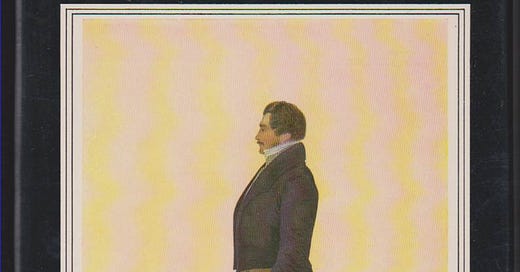Sir Thomas Phillipps (1792-1872) amassed the largest collection of manuscript material in the 19th century.1 Phillipps was an English antiquary and one of the most prolific manuscript and book collectors of the 19th century. His obsession drove him into perpetual debt and family discord. Phillipps aimed to own a copy of every book and manuscript in existence, amassing around 40,000 printed books and 60,000 manuscripts, the largest such collection of its time.2
Phillips was an illegitimate son of a textile manufacturer and inherited a substantial estate, which he spent almost entirely on vellum manuscripts and, when out of funds, borrowed heavily to buy manuscripts, putting his family deep into debt. Phillipps recorded in an early catalogue that his collection was instigated by reading various accounts of the destruction of valuable manuscripts. He acquired some 40,000 printed books and 60,000 manuscripts, arguably the largest collection a single individual has created, and coined the term "vello-maniac" to describe his obsession, which is more commonly termed bibliomania.3
Phillipps would go into bookshops and purchase the entire stock; he would receive dealers' catalogues and buy all the listings; his agents bought entire lots of books at auction, outbidding his rival the British Museum.4
The Dispersal of the Phillipps Library details the auctions, private sales, and eventual dispersal of the manuscripts and books, much of which was sold to institutions and collectors worldwide. The “residue of the residue” was sold to H.P. Kraus in 1977, and many manuscripts remain in private hands, making them difficult to trace. 5
The Phillipps Studies by A.N. L. Munby
The Phillipps Studies (Nos. 1–5) are a series of five volumes written by A.N.L. Munby,6 published by Cambridge University Press between 1951 and 1960, which provide a comprehensive account of the life, book-collecting activities, and legacy of Sir Thomas Phillipps (1792–1872). The series is considered the definitive study of Phillipps’ Bibliotheca Phillippica and offers insights into 19th-century book collecting and the book trade. Summary of the five volumes:
The Catalogues of Manuscripts & Printed Books of Sir Thomas Phillipps: Their Composition and Distribution (1951, 39 pages)
This volume examines the catalogues Phillipps created to document his vast collection of manuscripts and printed books. It details how these catalogues were compiled, their structure, and how they were distributed, providing a foundation for understanding the scope of his acquisitions.The Family Affairs of Sir Thomas Phillipps (1952, 119 pages)
This volume focuses on Phillipps’ personal life, including his troubled family relationships, particularly with his son-in-law, J.O. Halliwell, who married Phillipps’ daughter against his wishes. Drawing from Phillipps’ private papers, it portrays a man whose obsession with books often overshadowed his personal relationships.The Formation of the Phillipps Library up to the Year 1840 (1954, 177 pages)
This volume covers the early development of Phillipps’ library, detailing his collecting methods and acquisitions up to 1840. It highlights his relentless pursuit of manuscripts and books, including rare and unique items, and the networks he used to build his collection.The Formation of the Phillipps Library Between 1841 and 1872 (1956, 227 pages, with an account of the Phillipps art collections by A.E. Popham)
This volume continues the story of Phillipps’ library, focusing on the later years of his collecting (1841–1872). It includes a section on his art collections, contributed by A.E. Popham, and explores how Phillipps expanded his holdings despite financial and personal challenges.The Dispersal of the Phillipps Library (1960, 203 pages)
The final volume traces the fate of Phillipps’ collection after his death in 1872. It details the auctions, private sales, and eventual dispersal of the manuscripts and books, much of which was sold to institutions and collectors worldwide. The “residue of the residue” was sold to H.P. Kraus in 1977, and many manuscripts remain in private hands, making them difficult to trace. A numerical index of Phillipps manuscripts is included (pp. 121–133).
The series, totaling over 800 pages, includes 41 plates (with frontispieces, one in color), facsimiles, a genealogical table, appendices, and indices. The Phillipps Studies are a key resource for scholars of book history, manuscript studies, and 19th-century cultural history.
The Craziest Book Collector in History
Munby, A. N. L. 1967. Portrait of an Obsession; the Life of Sir Thomas Phillipps, the World’s Greatest Book Collector. (Adapted by Nicolas Barker from the Five Volumes of Phillipps Studies by Munby). New York: Putnam. You can read this at the Internet Archive: https://archive.org/details/portraitofobsess0000munb/page/n7/mode/2up
The Yale University Library, Beinecke Rare Books & Manuscript Library Exhibit, “Bibliomania; or Book Madness: A Bibliographical Romance,” included a case study of Thomas Phillips: Every Book in the World. It was held January 18, 2019 to April 20, 2019) and the website can be retrieved. It explored the passionate collecting and printing history of the legendary nineteenth-century bibliomaniac, Thomas Phillipps, whose vast collection of manuscripts and early printed books filled an English country house and required more than a century of public auctions and sales to disperse.
Sir Thomas Phillipps. (overview in Wikipedia).
Nicolas Barker: Portrait of an Obsession: The Life of Sir Thomas Phillipps, the world’s greatest book collector, 1967. (adaptation of Munby-see footnote 1.)
Munby, A. N. L. 1960. The Dispersal of the Phillipps Library. Cambridge: University Press. For a sales catalogue see: Catalogue of the First Portion of the Famous Library of Sir Thomas Phillipps, Including a Complete Set of the Publications Privately Printed by Him at Middle-Hill, Etc., which Will be Sold by Auction by Sotheby, Wilkinson & Hodge, 3d August, 1886, and Seven Following Days.
A.N.L. Munby was librarian of King’s College, Cambridge (1947–74). Munby focused on 19th-century bookselling and *bibliophily; his major work was the five-volume account *Phillipps Studies (1951–60). Munby’s writings demonstrated the importance of *auction catalogues, which he collected, as historical sources. A fellowship in bibliography was established at the University Library in his memory. Source: (2010). Munby, A. N. L. (Tim). In The Oxford Companion to the Book. : Oxford University Press.






Delightful ...